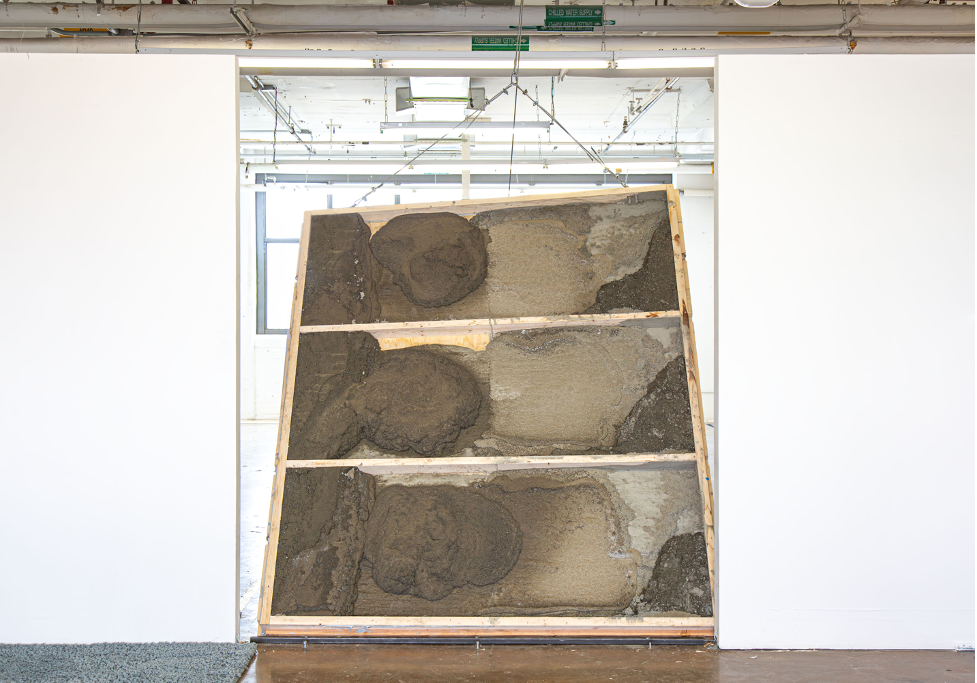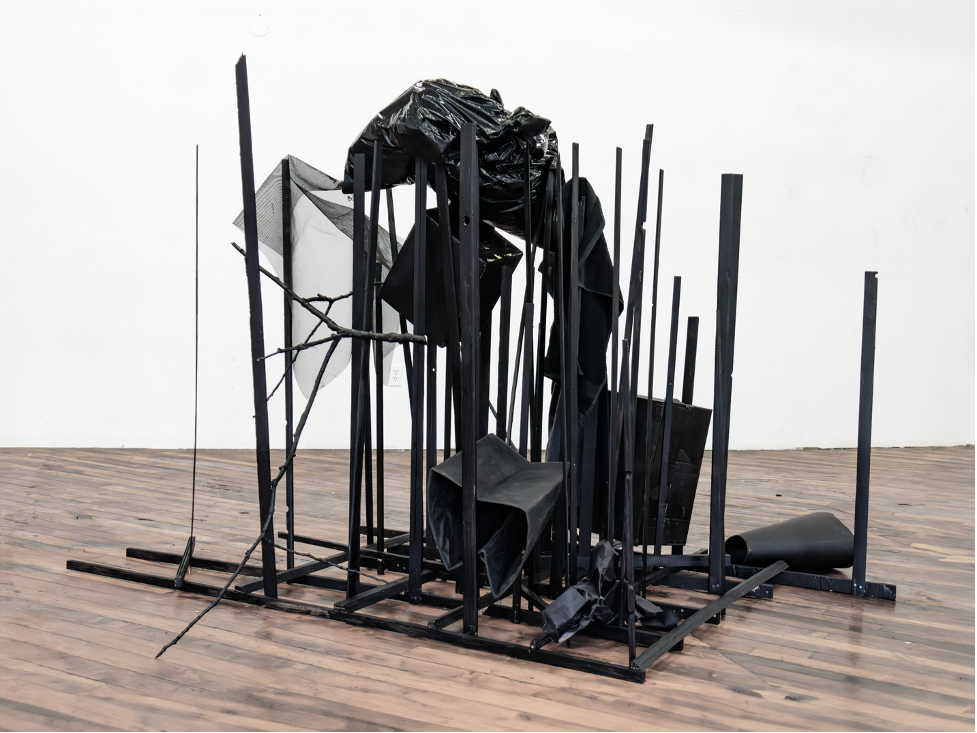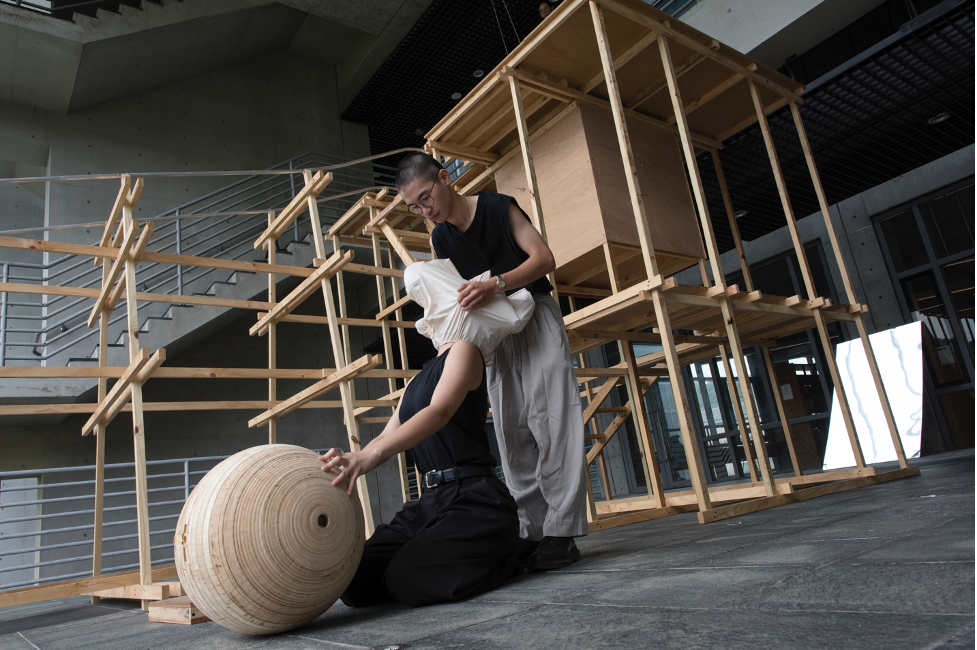Born in the vibrant atmosphere of Macau and fusing her experiences across diverse landscapes, Utong Aoieong stands as a testament to the rich tapestry of cultural and educational influences informing her artistry.
Currently living in Brooklyn, Aoieong’s journey through the world of creation began with a foundation in architecture from Shih Chien University in Taipei, Taiwan. Her transition to fine arts was marked by a master’s degree from Pratt Institute, where she honed her specialization in sculpture.
Aoieong’s artworks are not just visual splendors; they are the meditations of an inquisitive mind, contemplating the mysteries of form and space. Beyond mere statues, her sculptures weave movements with objects, embodying the dynamic interaction between human experience and physical tangibility. Contributing as a metal fabricator at Enzo Metal and serving as a studio assistant at UBR Studio, Aoieong is deeply entrenched in the world of art.
Formative sculptures
Deeply rooted in a Taiwanese educational background, “My Taiwanese education provided a strong foundation for creativity and how to make things as a human,” Aoieong reflects, emphasizing the holistic approach to learning and creating that she was exposed to. Likewise, she said, “My architectural education in Taiwan has allowed me to combine reason and emotion. Upon delving into art studies, I realized my art wasn’t merely an emotional outlet but a platform for analyzing the motivations behind it.”
This educational experience not only honed her technical skills but also nurtured a broader conceptual understanding of art, enabling her to see beyond the conventional boundaries of architecture into the realms of personal and artistic exploration.
“The emphasis on hands-on experience in Taiwan played an important role in guiding me towards sculpture, allowing me to delve deeper into the craft,” Aoieong explains. This approach to education—valuing the tactile, the tangible, and the experiential—provided her with the tools and the mindset to experiment and innovate within her sculptural work.
Through this lens, her education was not just about acquiring skills but about cultivating a way of seeing and interacting with the world, enabling her to redefine her surroundings and her place within them creatively.
Navigating cultural identity
Utong Aoieong‘s artistry is a vivid reflection of a river fed by various streams, with her Macanese heritage playing a subtle yet profound role. Aoieong shares a nuanced perspective on the influence of her background, stating, “Currently, my Macanese heritage hasn’t directly influenced the themes in my artwork. I prefer not to link my art themes to any specific country.” This approach reveals her reluctance to anchor her art to a singular national identity, instead choosing to explore “the small, intriguing aspects of my life.”
Her works are thus deeply personal and resonate on a universal human level, a testament to the complexity and intentionality of her creative narrative.

Title: random object | Medium: wood, found object | Size: 40x60x65″ | Video: https://youtu.be/GRierECyfFY?si=l9reo1Z0Q5L0JQBr
“Currently, I don’t intentionally incorporate Macanese culture into my art,” she clarifies, suggesting that cultural influences subtly permeate her work, allowing the essence of her experiences to surface naturally. She believes that her “experienced culture will naturally manifest in my work,” indicating a deep-seated authenticity in how she engages with her heritage.
Aoieong’s reflections on cultural influence in art reveal a thoughtful contemplation of identity and authenticity. She posits that the absence of explicit Macanese cultural elements might indicate that “that particular cultural influence hasn’t found a place within me.”
This introspective stance highlights the nuanced complexity of cultural identity in art, suggesting that the lack of overt cultural markers does not diminish the presence of her heritage in her creative journey. Instead, it points to a deeper, perhaps subconscious, process of cultural assimilation and expression within her artistic practice.
Interwoven inspirations
Navigating her path as an artist is deeply engraved with diverse cultural imprints. Reflecting on her experiences, Aoieong shares, “While I haven’t formally studied the artistic traditions of both regions, my observation suggests that Taiwan’s culture, blending Japanese and Chinese influences, tends to prioritize craftsmanship and boasts advanced technology in industrial production.”
This insight sheds light on Taiwan’s rich heritage, where the melding of Japanese precision and Chinese artistry fosters an environment ripe for technological innovation and meticulous craft.
Conversely, Aoieong’s perspective on Macau’s art scene unveils a different kind of complexity. She remarks, “Macau, a blend of Portuguese and Chinese cultures, seems to lack a distinct indigenous artistic identity.” This observation underscores the unique cultural intersection in Macau, where the interplay of Portuguese and Chinese legacies enriches the city’s cultural fabric yet poses a challenge for artists striving to carve out an identifiable niche within this intricate mosaic.
The transformation in Aoieong’s artistic medium, from watercolors in Macau to woodworking in Taiwan, encapsulates her adaptive exploration across these cultural spectrums.
“My journey from watercolor learning in Macau to woodworking in Taiwan has influenced my perception of craft,” she notes, highlighting a significant shift not just in technique but in the way she engages with her surroundings and expresses her multifaceted identity.
Mentors and movements

The presence of mentors in an artist’s life can be transformative, guiding their creative and personal growth through pivotal stages. For Aoieong, this influence was profoundly felt through the mentorship of Professor Zhongxian Yan, who played a crucial role during her university years in Taiwan. This mentor, more than any specific cultural movement or regional artist, has played a pivotal role in shaping her approach to art.
“I would attribute a significant influence on my artistic style to Professor Zhongxian Yan,” Aoieong reflects, emphasizing the profound impact that his teachings have had on her development as an artist.
Professor Yan’s influence on Aoieong extended beyond traditional artistic techniques to encompass a broader philosophical approach to creativity. He “introduced me to diverse areas of art,” Aoieong recalls, marking a formative period in her education where the boundaries of art were expanded to include a wide array of expressions and mediums. More importantly, “He instilled in me the belief that nothing is impossible or strange, and that sometimes, understanding isn’t always a necessary condition for creative expression.”
This principle has evidently become a cornerstone of Aoieong’s artistic philosophy, guiding her to explore and express without the constraints of conventional understanding or the need to fit within predefined artistic categories. Through this lens, Professor Yan’s influence is seen as catalyzing a distinctive approach in Aoieong’s work, one that values exploration, openness, and the transcending of traditional artistic boundaries.
Utong Aoieong’s journey is a narrative of integration. Her sculptures and performances speak a language crafted from this duality of influence, yet defined by a distinctive voice that soars above geographic boundaries. In the constellation of modern art, Aoieong is a luminary, her work standing as both an individual monument and a shared heritage of humanity. Through each creation, she offers a glimpse into the manifold potentialities of material and idea, introspectively woven into the fabric of who she is—an artist of the world, for the world.




